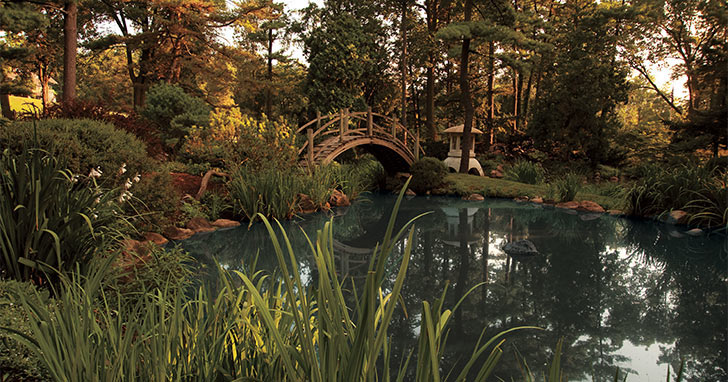
Important Fall steps for a healthy pond in Spring
Getting your pond ready for winter really begins in the fall. Water temperature, rather than air temperature, is the important indicator of when it's best to make changes to your pond. To prepare your fish and pond for a healthy spring, the first tool you will need is a thermometer. Tie a string to one end of the thermometer, then tie the other end of the string to a rock on the side of the pond for easy retrieval.
Fish Care
When the water temperature in the pond decreases to the lower 70s (°F), consider switching your fish food to a
wheat germ base that is more easily digested. As the temperatures cool, it is harder for fish to digest food properly. Even though your fish need to bulk up for winter, be careful not to overfeed. You can feed 2-3 times a day what they'll eat in 5 minutes or less, then remove any excess food. Once the water temperature falls to 50°F, the bacteria in a fish's digestive system are no longer able to process food efficiently. Switch to a wheat germ food and stop feeding when the temperature reaches 40°F.
Plant Care
It's always a good idea to trim and remove any dying plant material as it appears, so it does not add to debris build-up. Fall is a great time to divide and repot plants. The mild temperatures will give the plant time to heal its root system before cold temperatures arrive, and will most likely provide more blooms the following summer if properly fertilized. In northern climates when temperatures get below 60°F, tropical plants should be brought inside or disposed of, along with surface and submersed plants, as necessary. Trim the bog plants back and trim water lillies before frost. Then set all hardy water lillies to the bottom, given the pond is deep enough to keep them from freezing to the bottom in the winter.
Water Change
All this activity may stir up things, so it's a good time for a water change. You'll need to remove some of the excess debris or it will continue to decompose, using up oxygen and producing hydrogen sulfide, a toxic gas. A fine-weave aquarium net works well to sift out excess sludge. No need to completely drain and remove every bit of mud and debris, as a small amount is very helpful to the inhabitants for burrowing. A water change can be done anytime in the fall, but will be more comfortable for you if it's done before the water temperature goes below 60°F. A pond vacuum eases this process tremendously, so investing in one is highly recommended. If a 50% water change still leaves the water murky the next day, perform another water change. Remember to use dechlorinator if your tap water contains chlorine. Also, use a bacterial additive designed for cool water application to ensure efficient biological filtration.
Debris Control
When the first leaf falls, it's time to cover the entire pond with
netting. It's just about impossible to remove every leaf by hand, so covering your pond with netting saves a lot of time. The net is barely visible if properly stretched and anchored on the sides of the pond. It is very important to make sure the netting is above the surface of the water. As leaves gather, just remove the anchors on one side and flip the accumulated leaves off the net. Then re-anchor. If you have a skimmer filter, be sure to remove collected debris daily to prevent potential clogs.
Do I Need a De-icer?
In cooler climates, leave the netting on until the pond surface starts to freeze over. Then when you remove the net, you can set in the
de-icer. A pond de-icer does not heat the pond but instead keeps its immediate area from freezing. This allows toxic gasses to be released and oxygen to enter the pond. In warmer climates where ponds don't freeze over, the pumps and aerators need to continue running year round. If the water temperature drops into the low 40's (°F), it will be helpful to the fish if aerators are lifted from the bottom of the pond and placed near the surface.
Pump Care
When temperatures drop below 40°F, the main pump can be removed, and filters thoroughly cleaned. Do not leave the pump running on the bottom of the pond. It will lower the temperature of the entire pond by disrupting natural thermal layers of the pond water. Hyper-cooling" pond water in this fashion places extreme stress on pond fish, and severely reduces their ability to sucessfully over-winter.
All your efforts will pay off in the spring with a healthier pond and healthier fish.
Just because your pond will be "sleeping" for a while, doesn't mean it will look ugly. In fact, a frozen pond can be very beautiful, especially if you install underwater lighting. The effect is awesome!
Water Temperature Guide for Winterizing Your Pond
72º 50% water change, Divide and repot plants.
60º Mix staple diet with wheat germ, Bring in or dispose of tropical plants, Install pond net when leaves begin to fall.
50º Change food to wheat germ.
45º Trim hardy water lilies and move to deeper water.
40º Stop feeding fish.
Below 45º Move or remove pump, Install De-Icer.
|